Last August, I participated in a memorable hiking event organized by the Hiking & Adventure Club of Darjeeling (HACD), of which I am also a member. Days before setting off for the hike, we had a couple of get-togethers to plan and chart out the hiking routes, as well as other finer details. Some of the outlined plans were (i) it would have to be a day hike, (ii) It had to be off the beaten track destination in the neighborhood of Darjeeling town, and (iii) the hiking duration should keep us engaged more in the natural environment, as opposed to urbanized areas. Frequent WhatsApp group chats after these meetings ensured we stayed on track for the debut hike as per our outlined plans. On the event day, 11th August, the hiking team met at Ghoom, and took the Jorebunglow – Peshok road, taking a detour from 3rd Mile towards Mungpoo Cinchona Plantation.
While the five of us came together from Siliguri, Pokhriabong, and Darjeeling; Sanjeev, who is also the proprietor of Ryang Farmhouse at Jogighat, met us at the Labdah village junction and guided us through the trail.
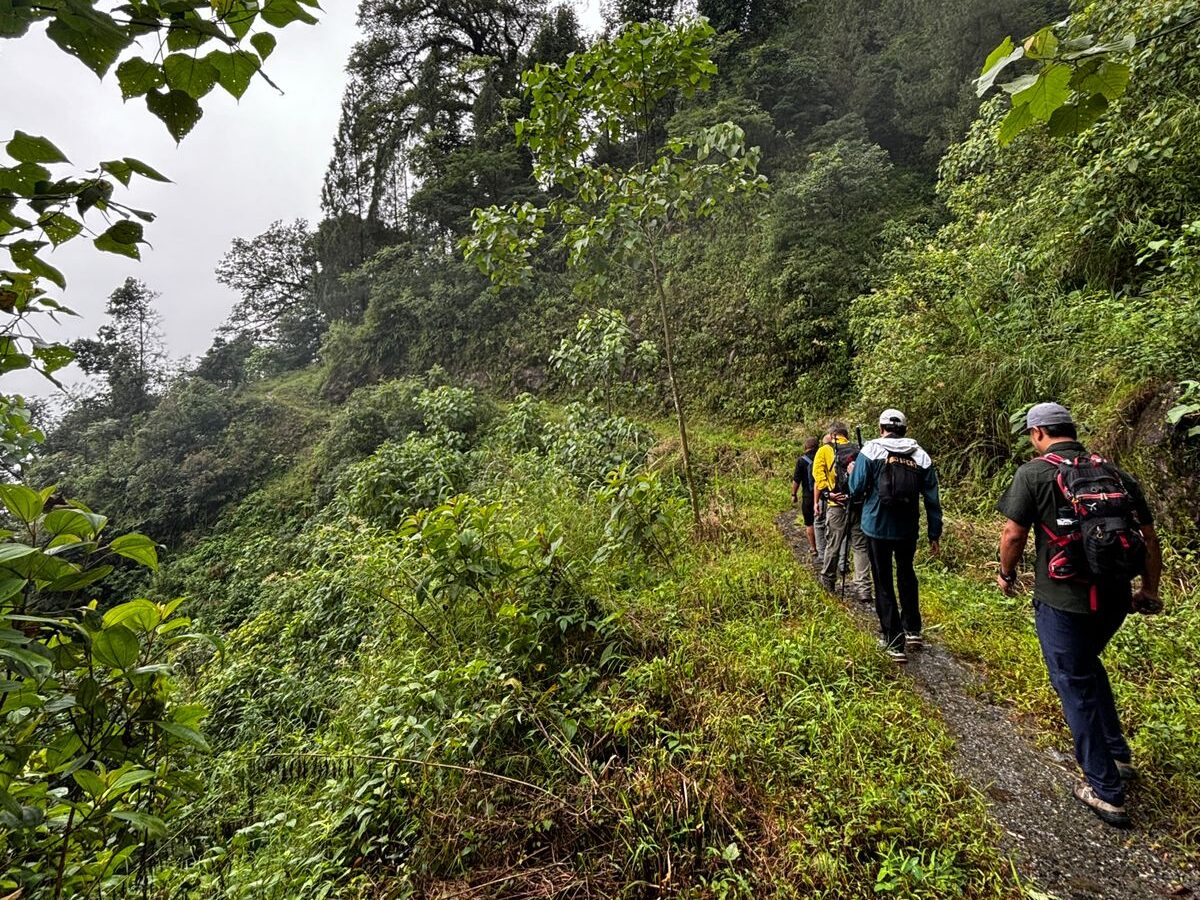
The hike was named “The Freedom Hike”, coinciding with the week leading to the upcoming 78th Independence Day of India. We drove about 3 km further to where the motorable road ended and the trail began.
The first segment of the hike followed a jungle foot-trail used by the villagers to forage fodder plants for their livestock, which also spontaneously connected to the neighbouring villages. Upper Labdah village, located at an altitude of approximately 6800 ft, is blessed with a dense cover of tropical evergreen forest. The trail is easy to moderate, occasionally lacerated by small monsoon-fed streams, which remain dry during the winters. After about two hours of traversing through this beautiful forested terrain, we reached the end of the jungle trail and came to a paved roadway that led up to the forest hamlet of Chatakpur. We took the descending road, making a left towards Mamring village.
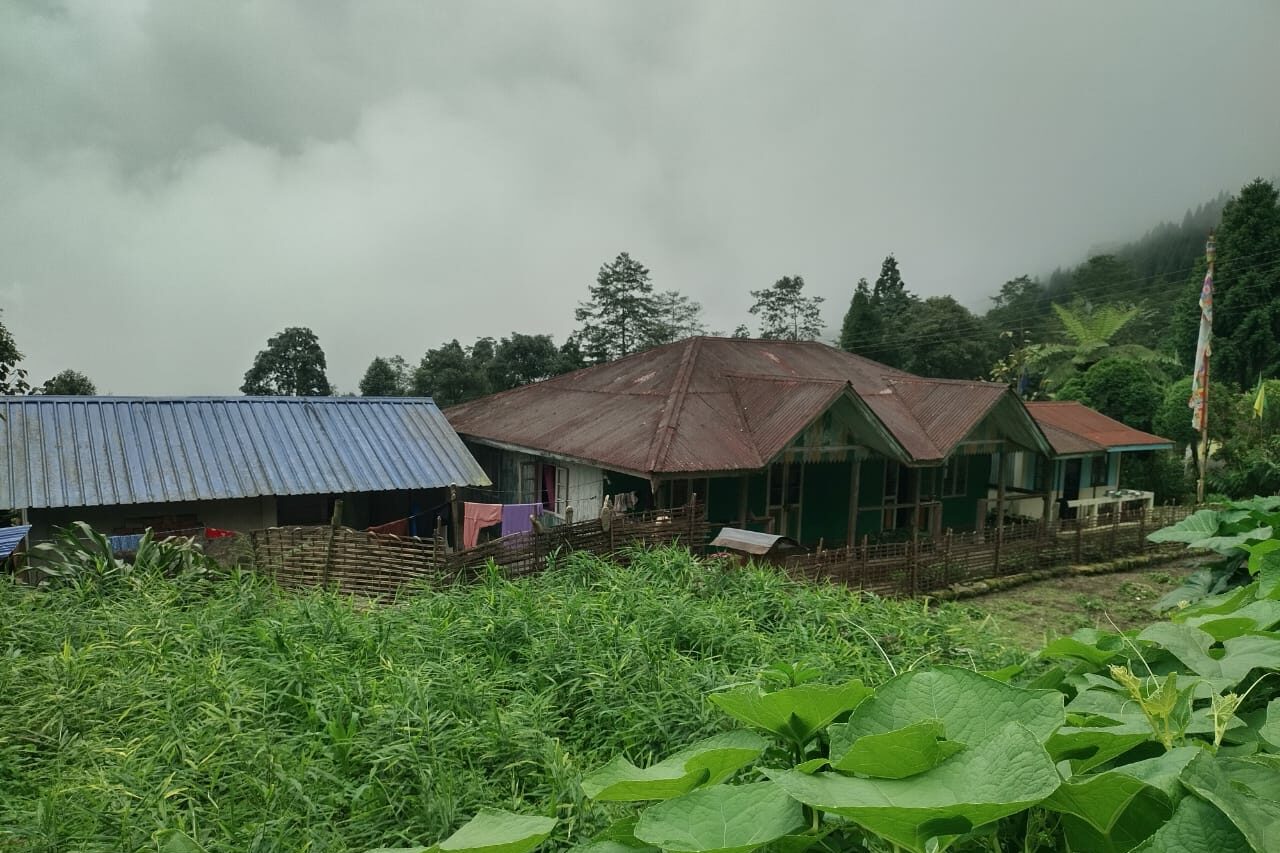
The once paved road, now weathered and exposing the soling, was easy to walk on, but I can’t say the same for the vehicles that have to ply this stretch.
We took a short tea break at a roadside homestay, admiring the serene beauty of the village of Mamring with neat houses surrounded by vegetable gardens growing cauliflowers, beans, peas, leafy mustard greens and so on. Nearby, the ever-growing homestays in this region were keeping the men busy with the construction of a new homestay.
Of the 10 km hike, we had covered 5 km already. The second segment of this descending hike took us through the different divisions of the Mamring villages to the penultimate village of Toryok before we reached our destination at Jogighat. The downhill hike on the asphalt wasn’t exactly a pleasure, but admiring the surroundings and trying to orient different areas visible during the walk, made up for the somewhat unremarkable path.
Notwithstanding, what made this stretch interesting was to pass by the inspiring Mamring – Toryok Higher Secondary School and to recall the innovative forms of education and activities that have been made viral by social media platforms in the recent times.
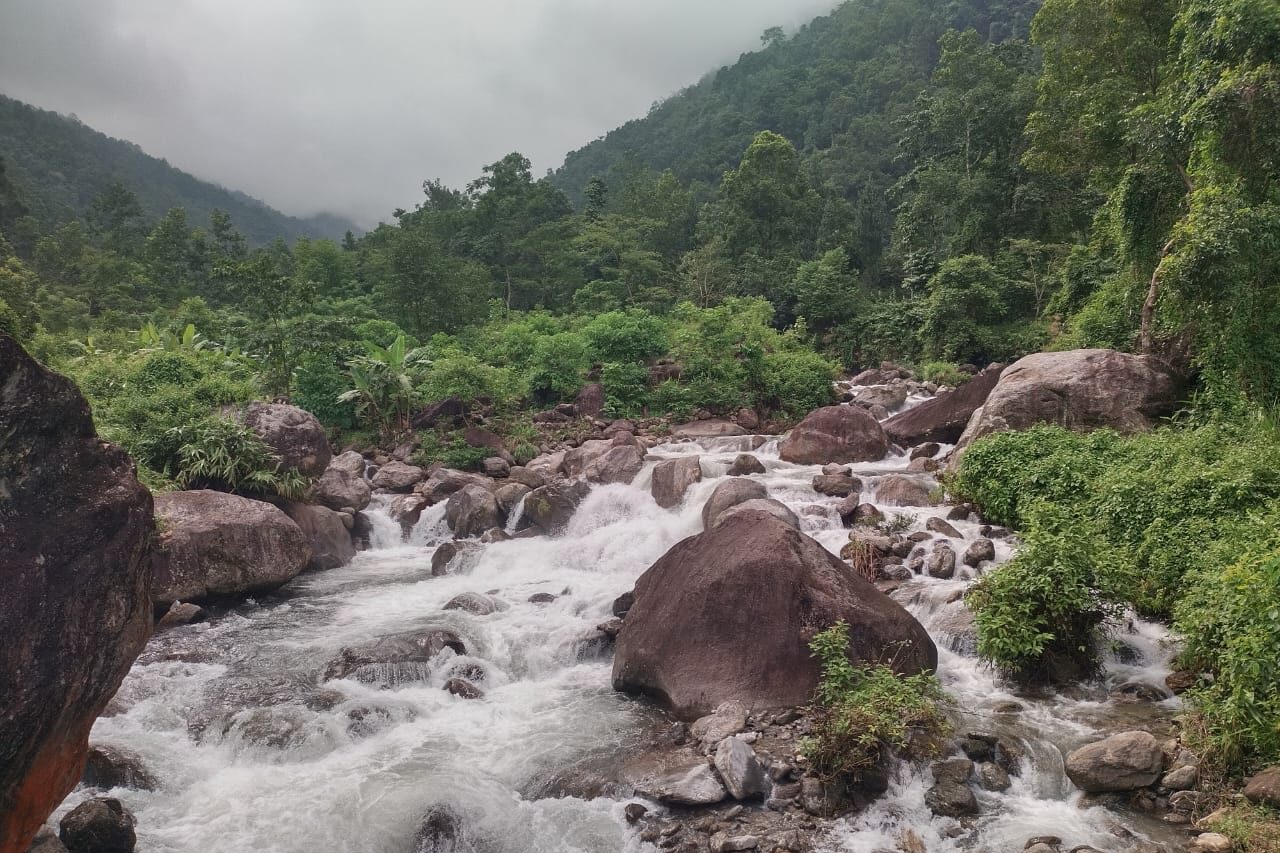
After about five hours of hike we descended to the foot of Toryok village which borders the Jogighat area of Mungpoo. The endpoint of our hike today was Ryang Farmhouse, which is located near the rivulet of Ryang Khola, a natural boundary between the sub-division of Kurseong and Mungpoo Cinchona Plantation.
As soon as we crossed the Ryang Khola, we felt like we had entered into a portal of the Lost World. The hustle and bustle of villages of Mamring and Toryok, the occasional din of vehicle movements, the sounds of tractors in the fields and carpenters at work, all of them simply vanished in the soothing rumblings from Ryang Khola. We crossed the rivulet over an iron bailey bridge, funded privately by Sanjeev, and which now connects the village with Jogighat bazaar.
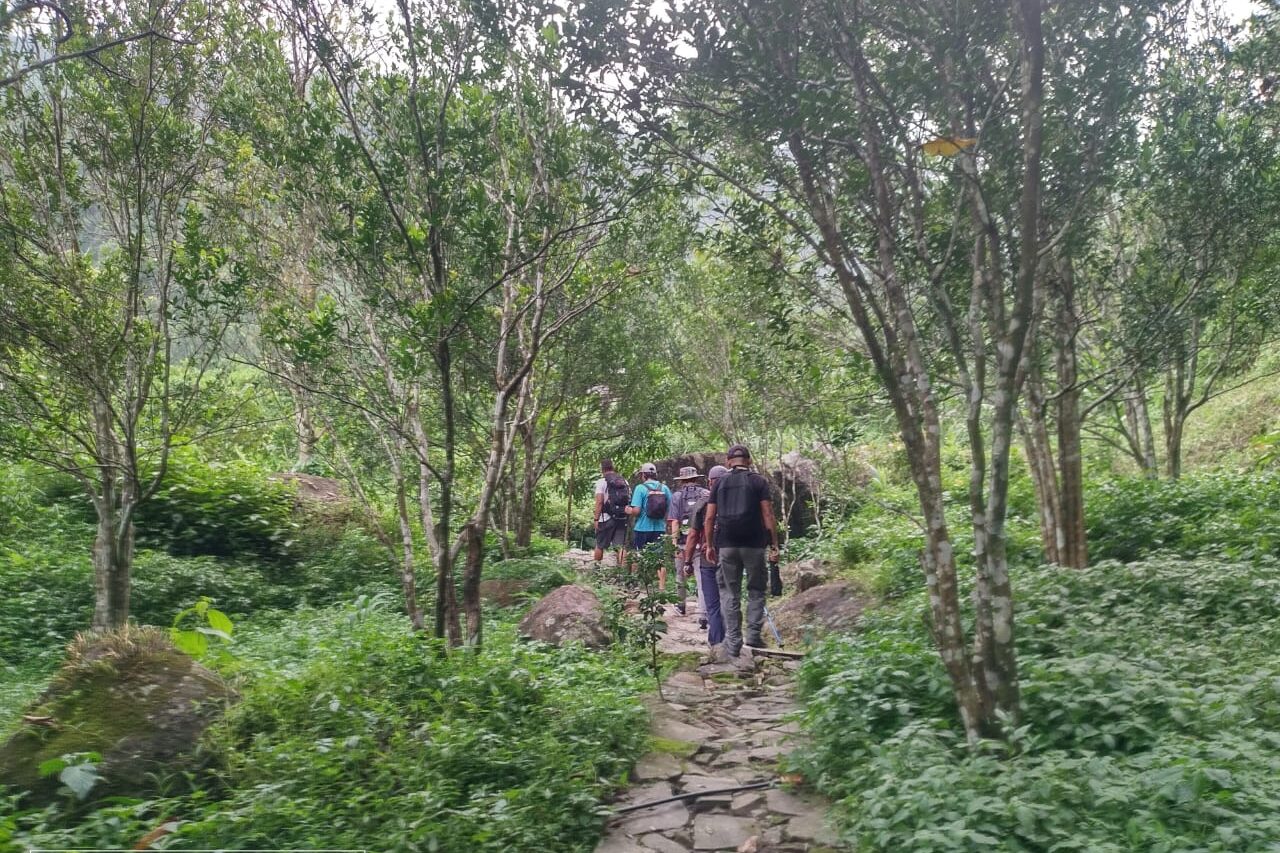
This final segment of the hike was the most beautiful as we entered into the private Shangri-La of Ryang Farmhouse, nestled amidst the lush tropical evergreen forest, ornamented by waterfalls, rivulets, an orange orchard, and a surplus organic kitchen garden. The farmhouse is spread out in an area of about 2.5 acres and has free access to the adjacent forest areas for hiking, and river pools for swimming. Currently, Ryang Farmhouse has a shed that can lodge visitors on mattresses, and ample ground for tents. A traditional Chula (mud fireplace), with an unending supply of firewood, collected from forest deadwoods, is an effective kitchen and a cozy zone for evening conversations by the fire. Although the stay is basic, the ambience amidst the uninhibited natural habitat is priceless.
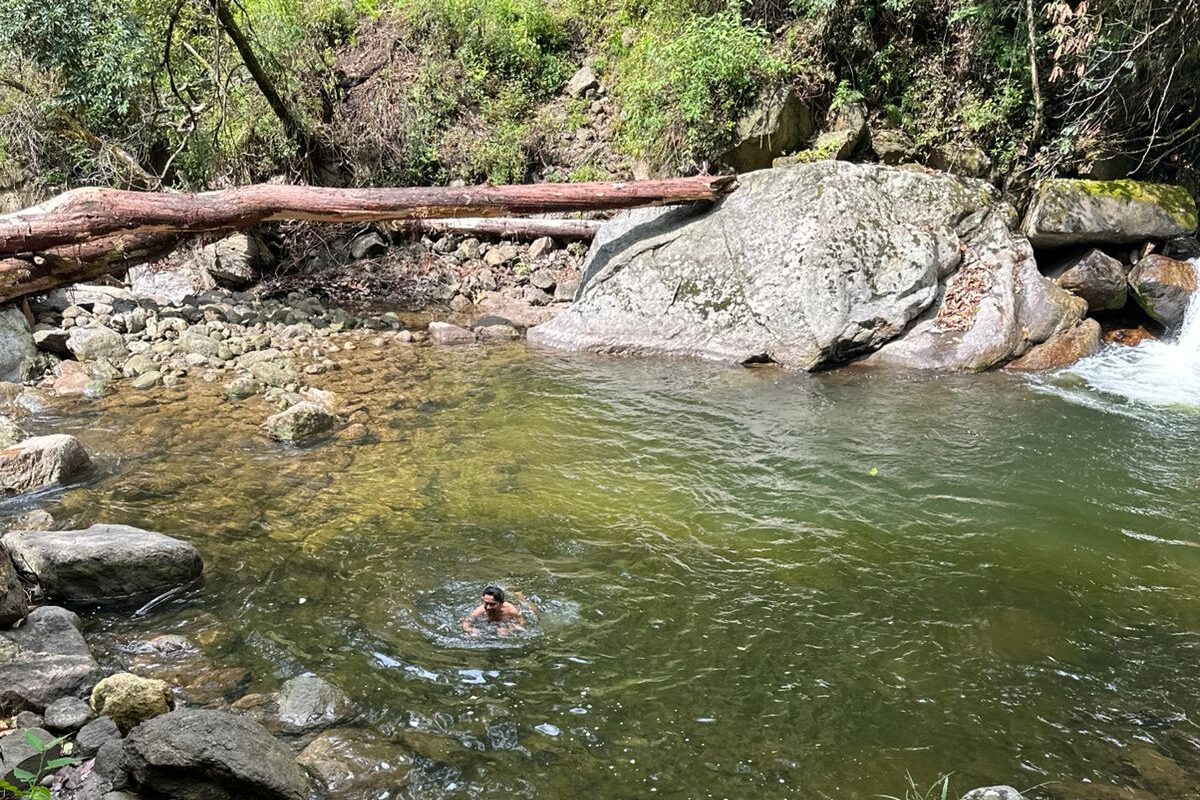
As we rested our backpacks and sipped ginger-infused black teas, the exhaustion from the five-hour hike was at once dispersed by the aroma of freshly prepared hot lunch spread, cooked on the Chula, and waiting for us to be served in a set of casseroles on a rustic wooden table. Sanjeev prepared a quick “Gorkhay Salad” with organic cucumbers, chillis, tomato wedges, finally garnishing it with coriander leaves and salt. We heartily ate our meals, sharing good humour and bonhomie in the lap of mater natura. Indeed, the freedom hike today had truly liberated us from our entrapped, busy occupational lives to a world where we released our stress, and relived our senses, wrapped in our serendipitous moments.
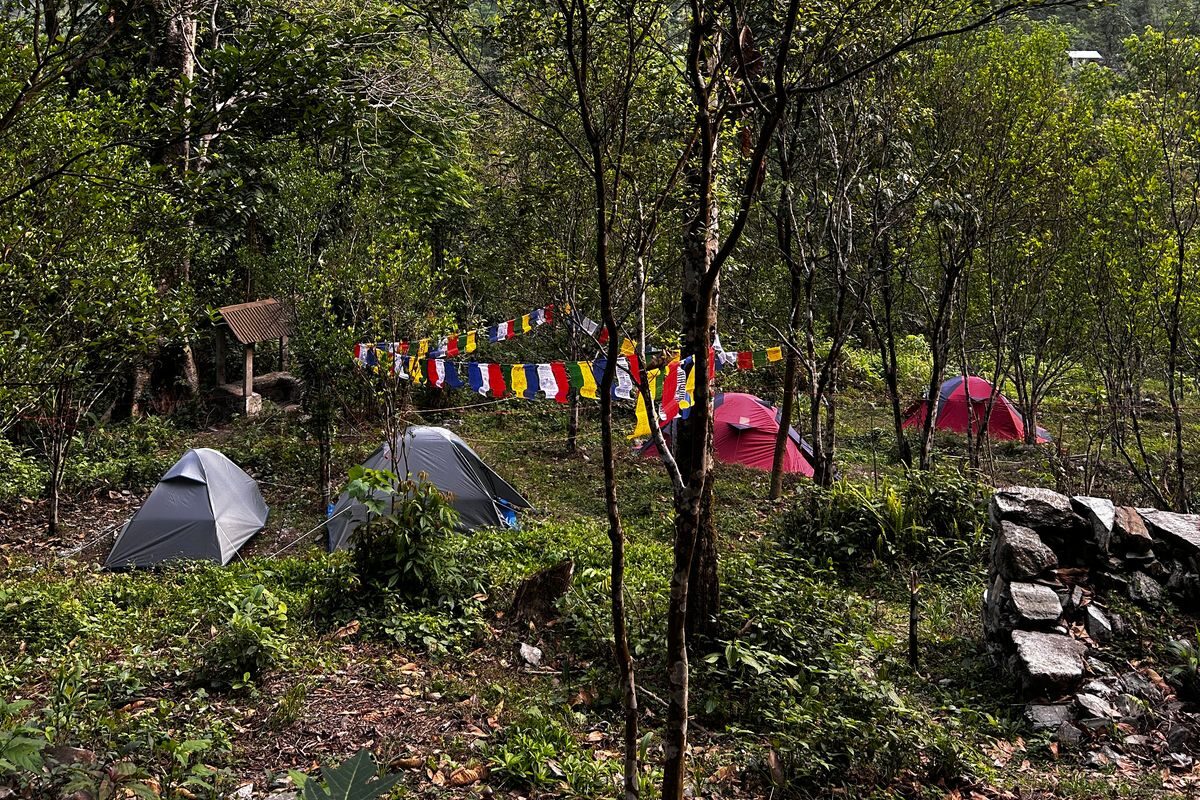
To know more about hiking in Darjeeling, connect with HACD via Facebook link: https://www.facebook.com/profile.php?id=61564417191885
To know more about Ryang Farmhouse, connect with the Facebook link: https://www.facebook.com/profile.php?id=100054258050630


